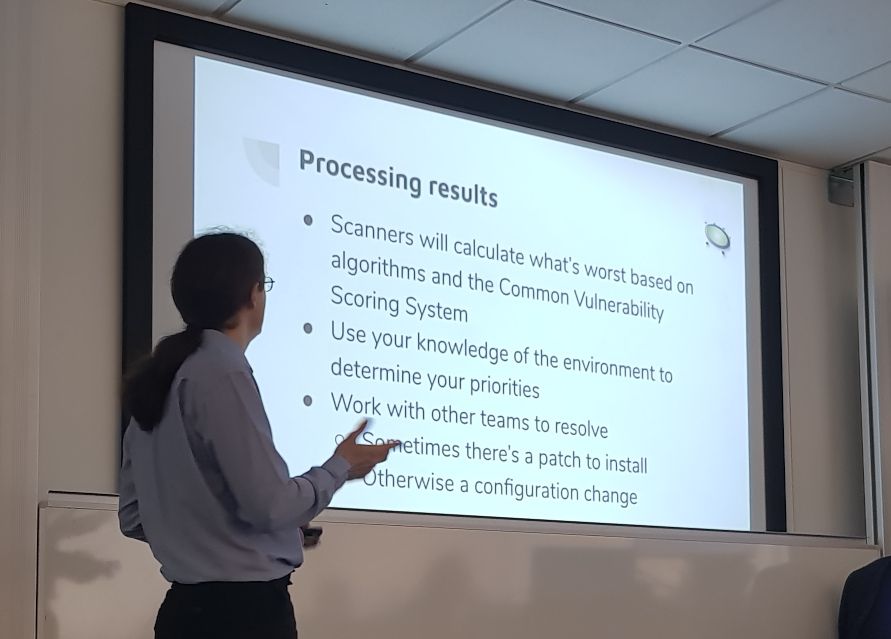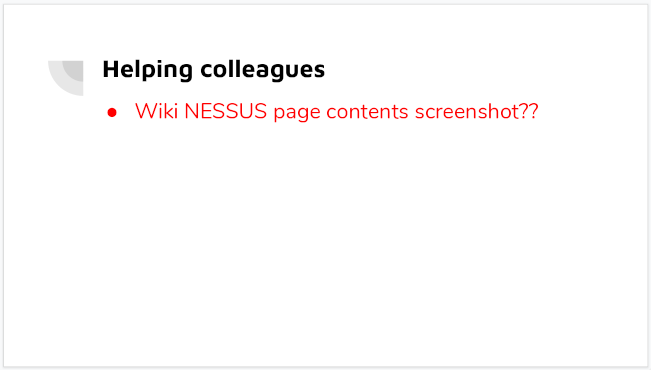Advice for public speaking & guest lectures
Advice on public speaking, based on my experiences so far.

I've been giving guest lectures, public speaking and running workshops for a few years now and have learnt a fair amount in that time. Presenting isn't something I'd say I was naturally drawn to (it happened by accident), and there's always some nerves before I present, but here's some advice that might help you.
Understand your brief
When writing a presentation, much like answering an exam question, it's important to understand what you're doing. Are you talking about a past experience? Is the intention to teach the audience a new skill? Your goal is to fulfill the requirements of the person who has invited you to speak so having a good understanding is key.
There's nothing wrong with asking further questions before you accept the invitation and this really is key to doing a good job. Sometimes your brief will be vague, so if you're not comfortable with it it's wise to get more information.
Understanding your brief ties in with knowing your audience.
Know the audience
Quite often I'm teaching when I present so knowing a bit more about the audience is helpful. When I'm guest lecturing I ask the lecturers what sort of existing knowledge I can expect and for a brief outline of the topics they've studied so far.
For example, at a guest lecture last year I was asked to run down the different aspects of cyber security, and to provide some hands on exercises. I was told I was speaking to second year students and confirmed they had met tools like Nmap and Wireshark before, so it was OK to include those. My concern with using a new tool would be making sure there was time to teach enough of it. Alternatively you can become overwhelmed by questions if the audience has never met a tool before. In that particular case I built on their existing knowledge instead.
Another important thing to consider is any additional needs of the audience. This is easier to account for in schools and universities because the tutors know the students so will be able to tell you if there's a need to consider Irlens (addressed by the colour of your slides), deafness (speak up, look at the person and don't cover your mouth) or if some students require a printed copy of the slides in advance. When presenting to members of the public at an event this is more tricky, so keep an eye on the audience and act accordingly.
Have a run through
I always run through my presentations, whether they're just 45 minutes or a two hour workshop. This helps to cement your topic in your mind but also allows you to rehearse timings. Depending on content I tend to aim for just less than one slide every two minutes.
The first conference I spoke at (2018) I was discussing how cybersecurity worked in local government. Part way through my run through I realised the presentation as it stood had no value to the audience - I was basically saying "in local government we use firewalls, anti-virus, spam protection". So what? Everyone else does too!
I re-wrote almost the entire deck and transformed it to show how we adopted a defence in depth approach and how we worked with the users to minimise risks through training. I also covered compliance and vulnerability management. If you're interested the slides are here.
Multiple copies
I used to produce my slides in LibreOffice although I've found it clunky for a while. Given I work on Linux there can also be problems if I have to transfer the slides to a Windows machine due to different fonts being available. My preference is to present from my own laptop but that's not always possible, hence the need for copies in multiple formats.
As a general rule I always make sure I'm carrying a PDF copy of my slides along with PowerPoint and LibreOffice formats. These days I'm using Google Slides more often so can share the slides with the venue if necessary.
On Google Slidess - make sure you've got the offline mode enabled for Google Docs in Chrome as you can't guarantee you'll have an Internet connection. Moreover, make sure you synchronise the latest version to your laptop - I've been caught out by that before!

Know where you're going
I have a real skill for getting lost, so much so it's a joke in the family - don't accept directions from me! Google Streetview is great for getting an idea of what the venue's surroundings look like. When I get to the venue I try to make sure I'm either met by someone or have a map. Alternatively, if it's local, I'll do a "dry run" of my journey.
Carry cables & clickers
The only time I didn't do this I got caught out. Always ask the venue what connectivity is available to the projector (HDMI, VGA, DVI, DisplayPort) and make sure you have some way to connect to that. I tend to carry HDMI cables and adapters to VGA, even though my laptop has both connections.
It's worth carrying cables of a reasonable length too - a one metre cable may not allow you to still see your screen due to the positioning of the laptop.
I tend to walk around while speaking, be that on the phone or presenting. Obviously there are limits to how much you can pace, but if you're moving you will find pressing "next" on the keyboard difficult. Use a remote presenter and make sure the batteries are still good.
Have water
Dry mouths accompany talking at length and nerves don't help. Carry water with you in a bottle that allows the water to flow freely: you don't want to have to squeeze it or have to suck to get the water.
Venues might provide water but my advice is not to rely on that (at least two I've presented at have not).
Be comfortable
Clearly you have to dress appropriately (despite working in security and being a trained penetration tester (hacker) I wouldn't turn up in jeans and a hoody!) but that doesn't mean you can't be comfortable. Usually I'll present in smart casual at a minimum, sometimes with a tie and jacket. I overheat quickly so the jacket often comes off.
Once your jacket is off consider sweat, something it's all to easy to become self conscious of as, let's face it, it's not the nicest thing to look at a sweaty person! Either wear a colour that doesn't show damp patches or wear a shirt that helps to hide it, something with lines. I find looking at shirts with lines or checked patterns uncomfortable but keep one lined shirt just for presenting, I just try not to look at myself.
Make it interactive
There's nothing worse than having an audience that sit there giving no feedback. I'm always happy to take questions and usually comment at the beginning that questions are welcome any time, just wave a hand. Also make sure you look around the room at the attendees, this helps to make you approachable and you can check you're being understood.
Interactive talks work best for me (also gives you an opportunity to drink some water) so I try to build in questions to the audience. These can range from "does anyone know what a white hat hacker is?" to "raise your hand if you've experienced this". This keeps the audience awake, focused and helps them feel like they can ask questions later.
My highlight to date was social engineering a group of students during a guest lecture. I was talking about cybersecurity careers and social engineering featured later in the presentation. These students "swipe in" to register their attendance at lectures so I mocked up a sheet with the university logo asking them for their name and university email address because "the university wanted to confirm the swipe system was working properly". Every student, even the late comers, signed in*. This demonstrated the point beautifully and I know the students still talk about it today, months later.

Question time
My aim is to always leave 5 minutes at the end for questions, this also gives you a nice buffer if you get behind (although consider it's more likely you'll speed up your delivery than slow down). Try to give equal opportunities to the attendees by not just focusing on one part of the room.
Make sure you understand the question before answering and don't be afraid to say if you don't know something. If you've got time to hang around afterwards for further questions, discussion and to expand on longer answers then the attendees will probably appreciate it.
Conclusions
Being prepared is often the key, sounds obvious but it's easy to get complacent. Also bear in mind that the quality of your presentations will change as you do more of them - looking at my old slide decks can make me cringe!
Banner image a photo from a lecture I gave in December 2018. Photo credit G.
*the fake sign in sheet was torn up in front of them, handed to to their normal lecturer in bits and securely destroyed. I had no need for their personal data. I also discussed it with the university in advance.

